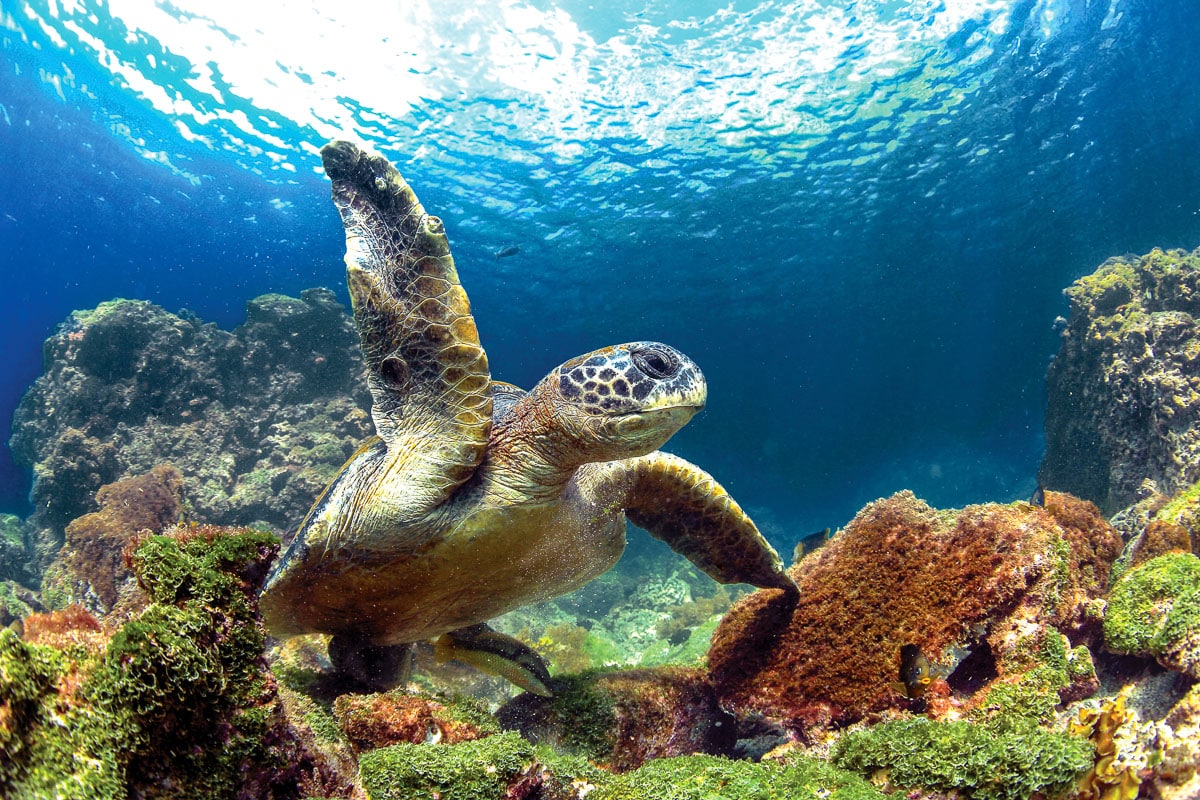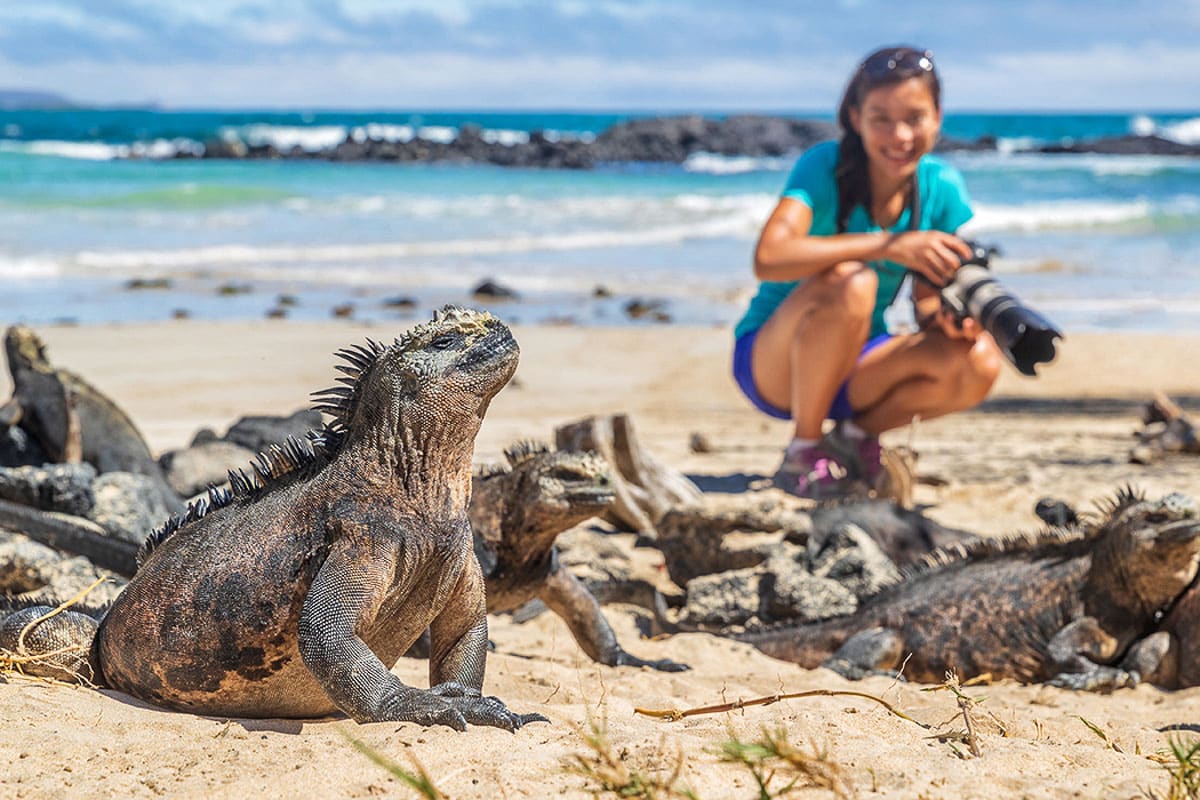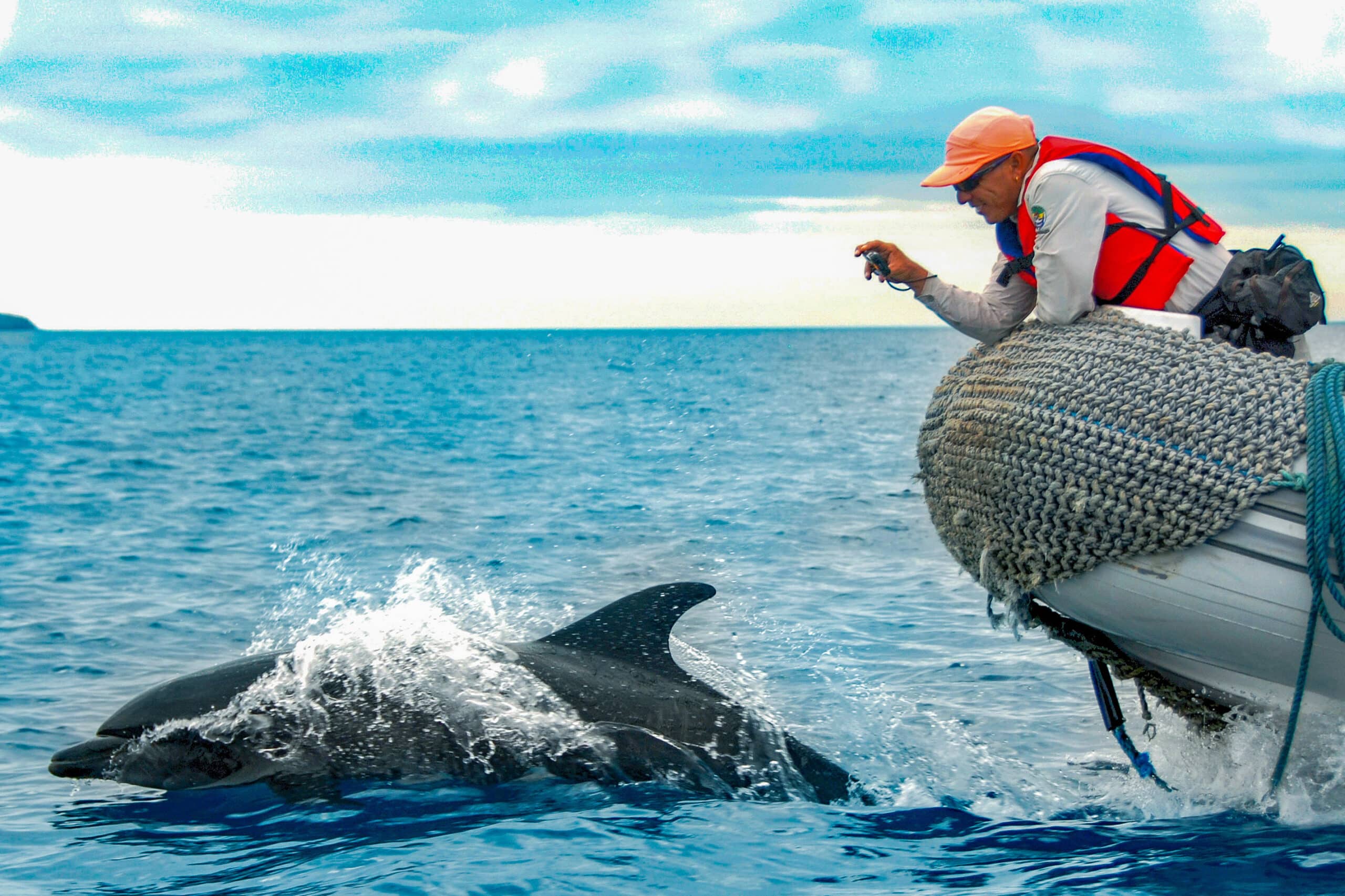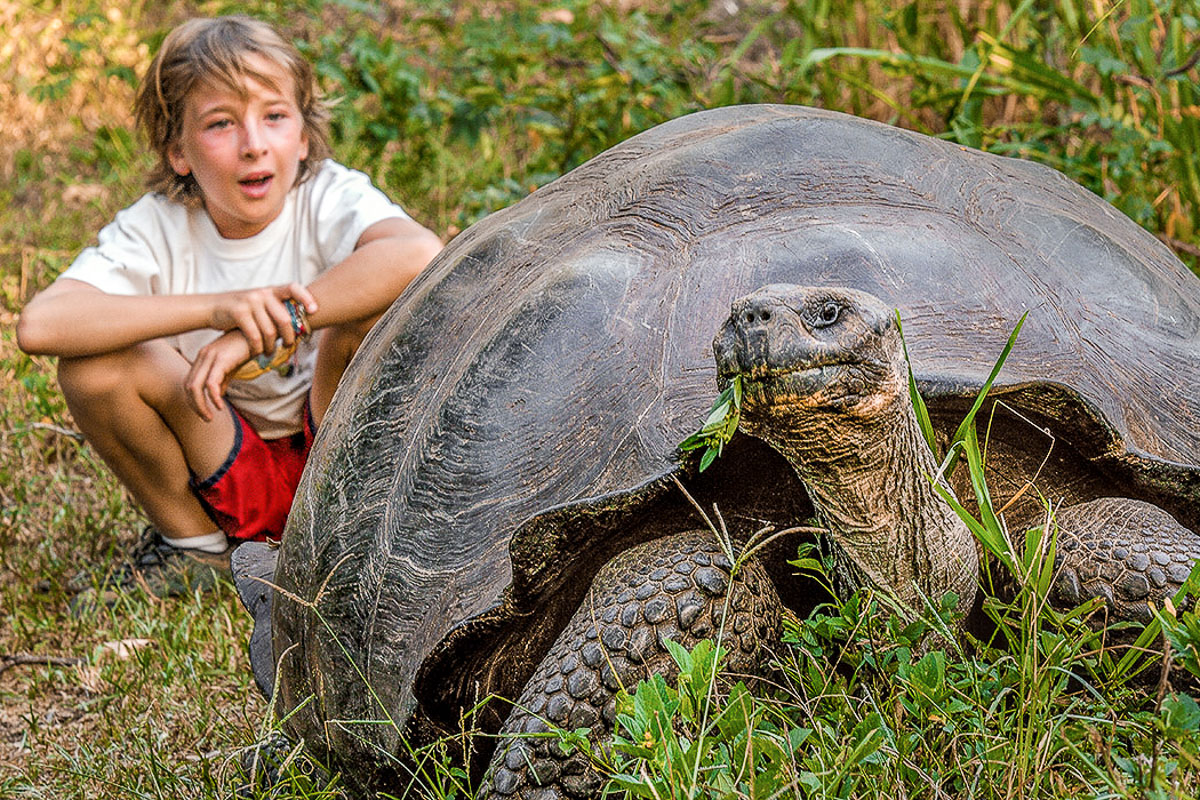
Galápagos Islands
The Best Time to Visit the Galápagos Islands
The islands are a year-round wonder—you simply can’t go wrong. Wildlife activity is always nonstop, however, the most popular months are typically December through June.
A destination as diverse as the Galápagos means that every moment of the day—let alone every season of the year—brings a unique wonder. Whether you prefer penguins to land iguanas, or warmer to cooler (but more active) snorkeling waters, there’s a time-of-year for you. WT embarks on adventures year-round and offers multiple epic trips that follow the movement of wildlife.
When it comes to weather, the archipelago’s place on the equator means little variation in temperature, though the year can be divided into the cool and dry season (June to November) and the warm and wet months (December to May). Unlike other destinations that often have high and low visitation seasons, the fact that the islands limit travelers and coordinate arrival and departure times means these ebbs and flows are slight. Depending on the year, cap off your adventure with an extension to Machu Picchu, the highlands of Ecuador, or the Amazon.

January
While this is considered the rainy season, what that means in the Galápagos is long stretches of sunshine marked by intermittent and light showers. Along with higher air temperatures, warmer water makes for perfect snorkeling and sea-kayaking conditions (highlights on all four of our adventures!).
February
Similar to January, warm days with occasional drizzles continue, as do spectacular wildlife-spotting opportunities: sea turtles nesting, marine iguanas attracting mates by changing color from black to iridescent green and red, and land birds performing theatrical courtship rituals.
March
As the “rainy season” ends, the islands are awash in color—from both their flora and fauna. This month is also an excellent time to spot baby animals, especially newborn seal pups frolicking about the beaches.
April
Landscapes blanketed in vibrant flowers, beaches dotted with newborn animals, and warm and humid weather extends into April, along with calmer waters that allow for tranquil days aboard WT’s small luxury yachts and sailing ships (and smoother Zodiac expeditions!). Add on an eight-day extension to Machu Picchu to beat the start of its peak season.
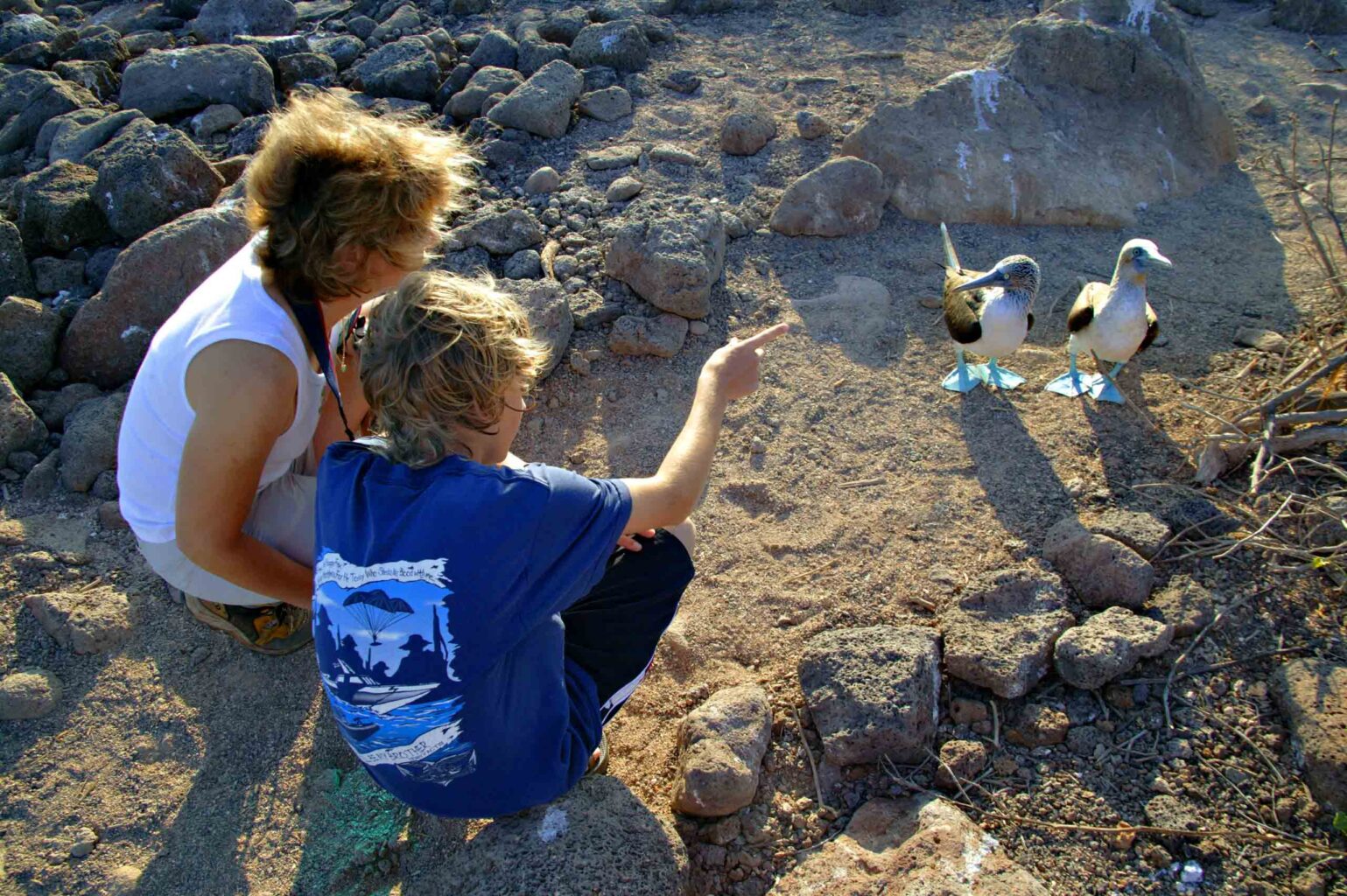
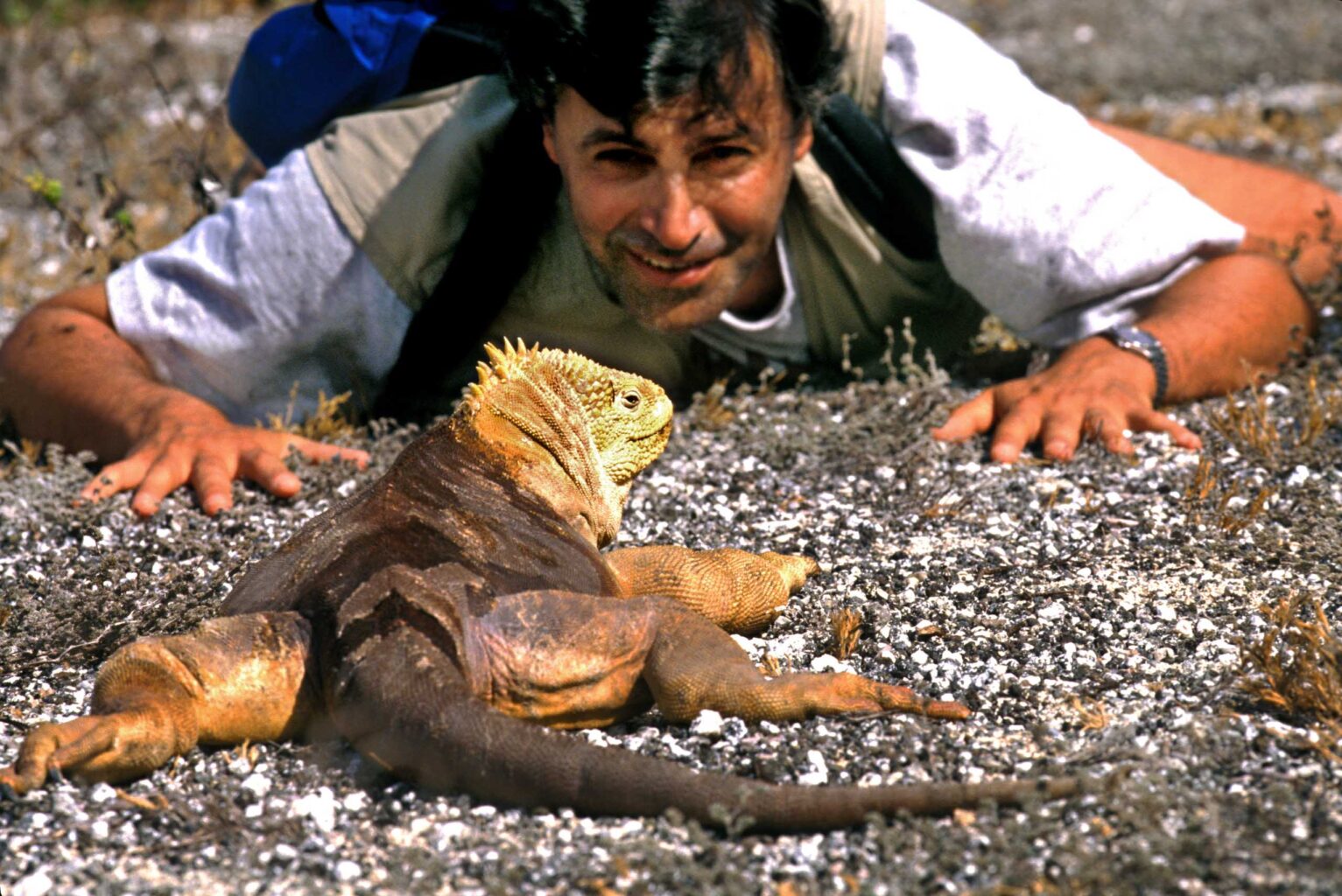
May
While ocean temperatures start to drop, clear water conditions make for excellent snorkeling. On land, wildlife continues to be very active, from hatching land iguanas to blue-footed boobies and waved albatrosses performing mating dances.
June
The Humboldt Current, an ocean drift that arrives from Antarctica, brings cooler temperatures, humpback whales, and an influx of nutrients to the Galápagos. In turn, wildlife—from seabirds to penguins—are more active (this is one of the best times to snorkel and sea kayak); and sunny skies and calm coasts give way to cloudier days and choppier waters. The start of the dry season in the Ecuadorian highlands makes this an ideal time to add on WT’s four-day extension at a beautiful upland hacienda.
July
Dancing lava lizards, gathering migratory birds, and waters filled with dolphins and whales are just a few of the highlights this month, which is when cooler and drier conditions begin. Take advantage of prime conditions in the Amazon by adding on WT’s four-day extension in a private ecological reserve owned by the native Yasuní people.
August
There is no shortage of unique bird-watching opportunities this month, including the islands’ famed flamingos in courtship mode. This is also when sea-lion pupping is in full swing. The winds and waves can be quite strong this month, so be prepared for choppier ocean excursions (those who suffer from seasickness should avoid August and September).
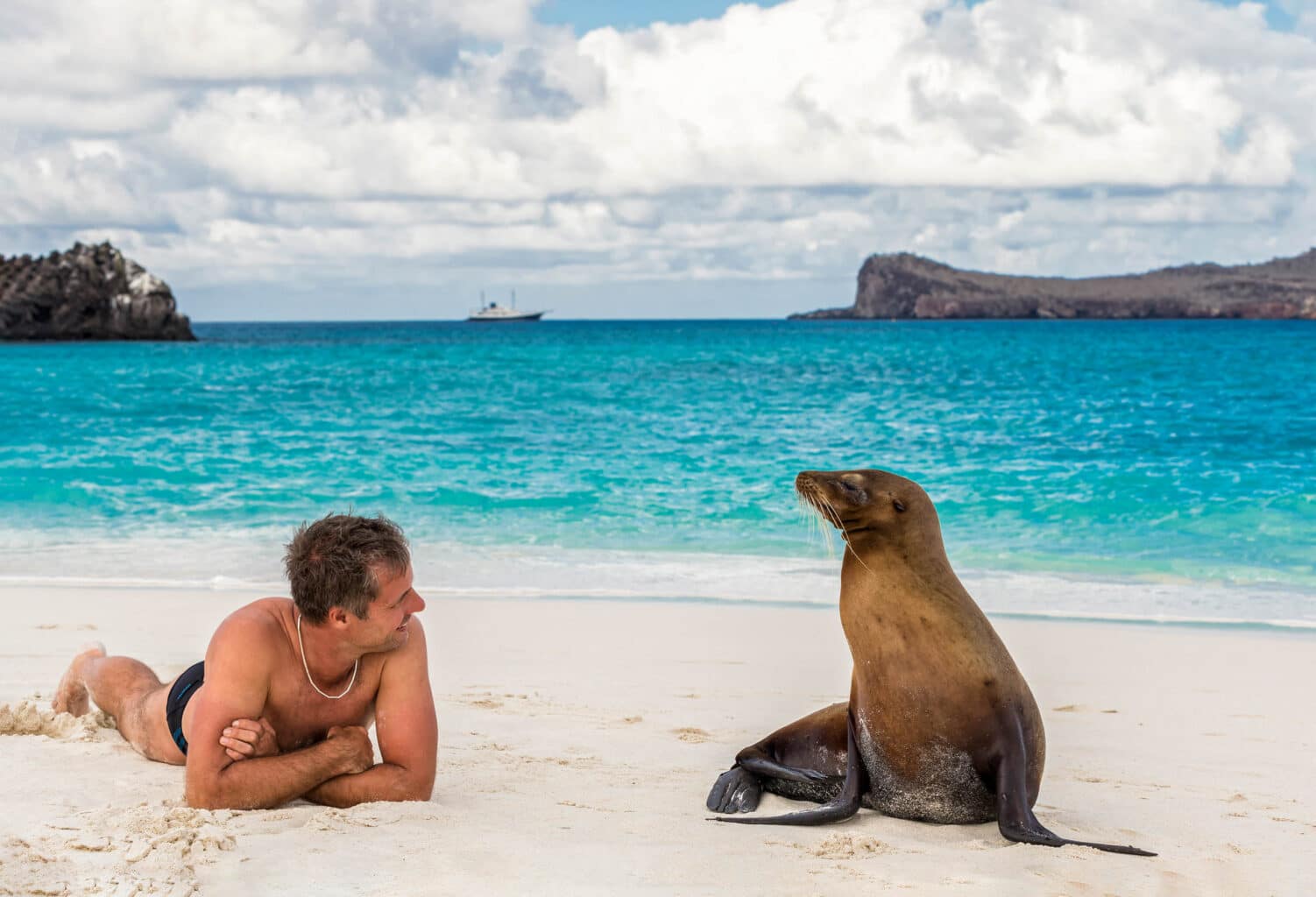
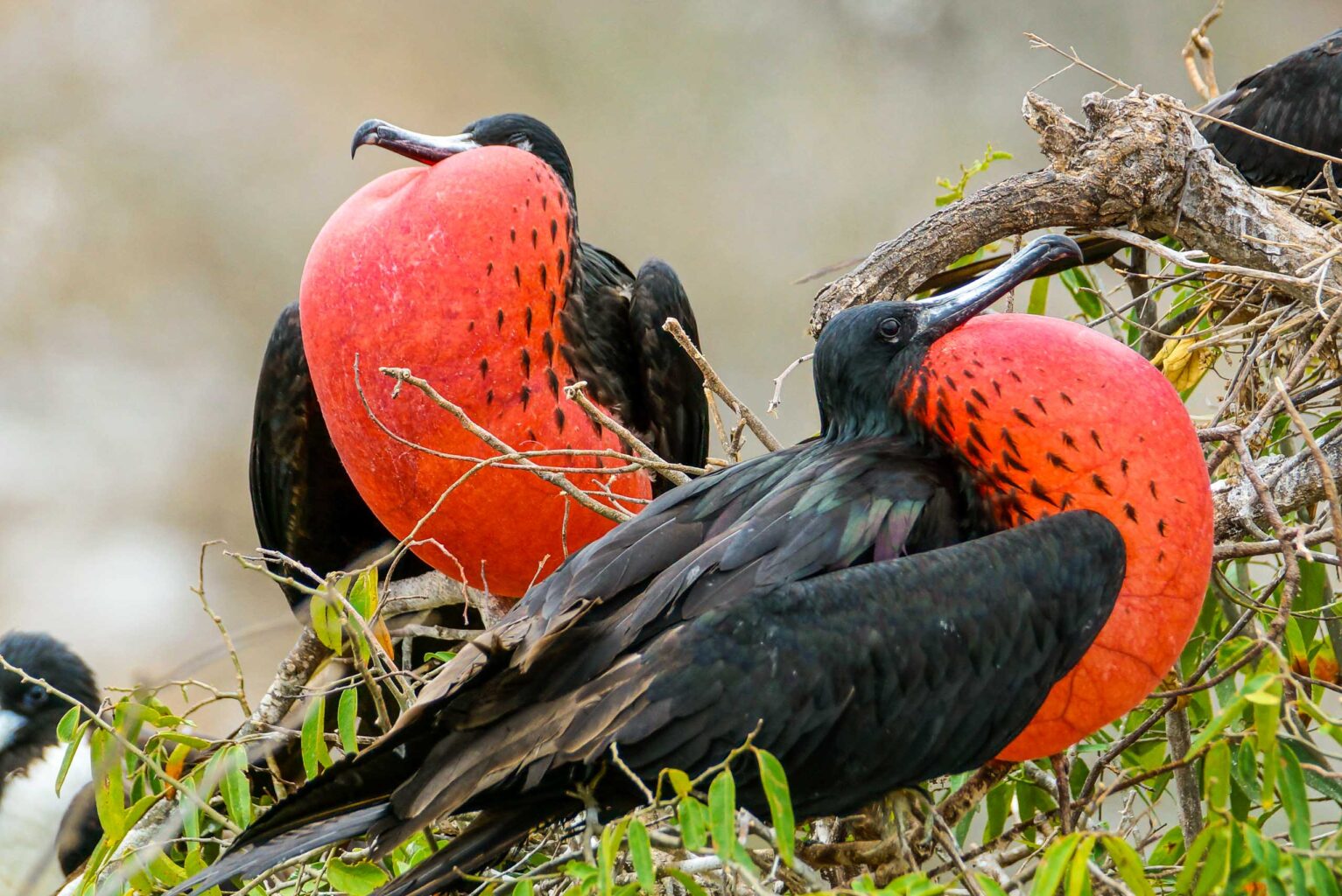
September
This is the quietest time across the islands, due to high winds and rough waters. Travelers who are less affected by these conditions (those who suffer from seasickness should avoid August and September), will be rewarded with the active start of sea lion breeding and penguin mating seasons.
October
As the winds and waves calm down, various mating (fur sea lions!) and nesting (lava herons) seasons are in full swing.
November
Similar to October, this shoulder month sees fewer visitors but plenty of incredible wildlife rites of passage.
December
The end of the year is when the region’s “rainy season” usually kicks off, which features sunny, warmer days punctuated by light, short spells of rain. There’s also plenty to see, from young albatrosses learning to fly to giant tortoise eggs hatching. (Due to the holiday season, our December departures are usually the first to sell out, so book early!)
Learn More
Talk to an Expert
Our Galápagos Specialists know every detail about our Galápagos Islands trips. They will be happy to answer any questions and help you choose the journey that’s right for you. Contact us to learn more or book your trip today!

